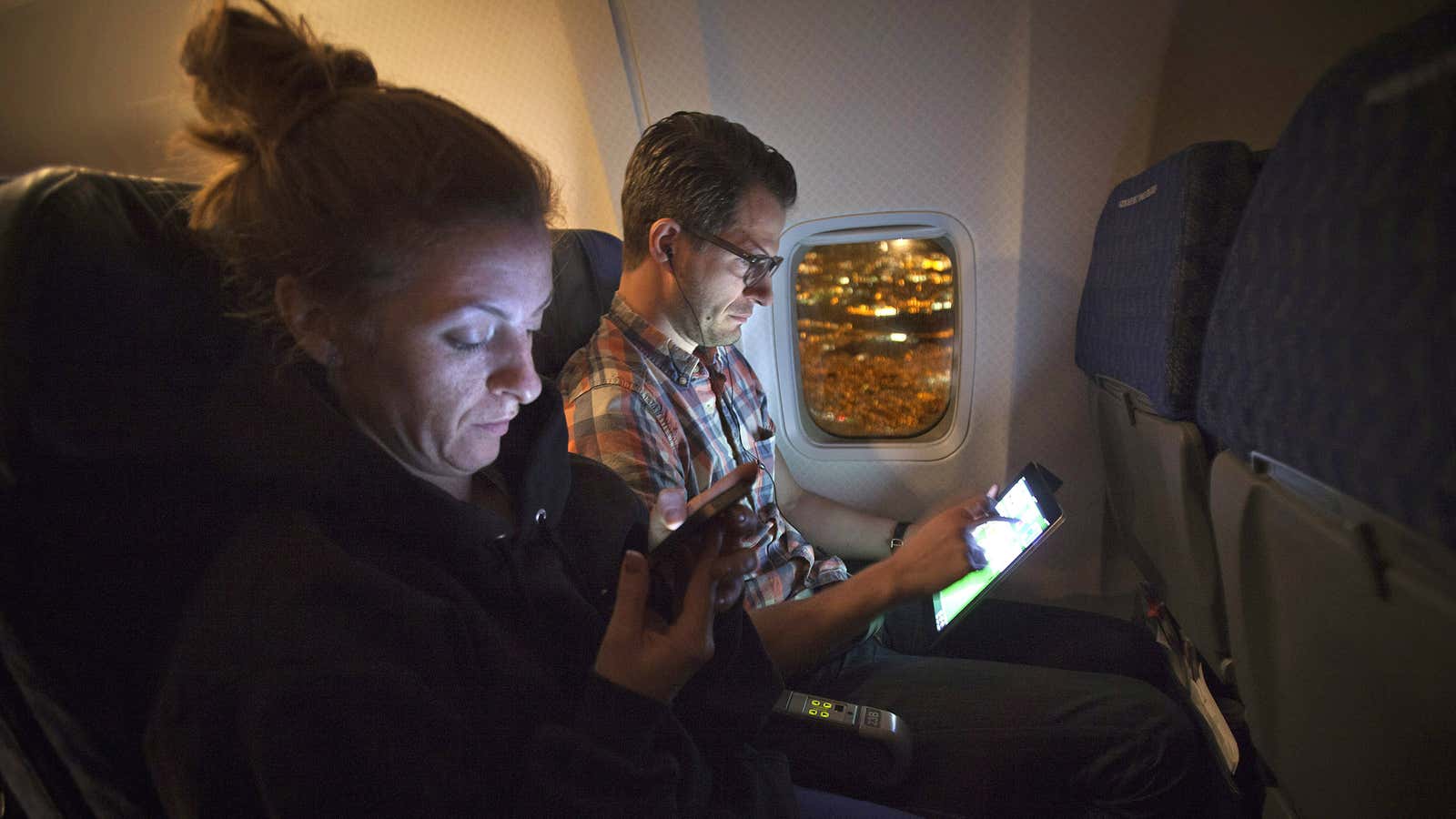You couldn’t blame airlines for wanting to return to a pre-social media era. After all, with incidents like United’s inexplicable (and viral) treatment of a passenger last year, the social era has made the job of damage control considerably harder.
A report from digital consultancy Conversocial which looks at airline responsiveness hints at one of the ways airlines are meeting that challenge. Instead of dealing with your gripes in the noisy (and public) space of a Twitter feed or public Facebook post, some airlines are increasingly carrying out private conversations with customers using Twitter DMs, Facebook Messenger, or a text or WhatsApp message.
According to an analysis of three of Conversocial’s airline partners over a six month period in 2017, Facebook Messenger volume doubled over the six months prior, and there was a 50% jump in the number of Twitter DMs.
This is, in part, driven by consumers themselves. After all, when your flight is delayed or cancelled, you don’t much care how you get your complaint across or issue fixed, just that you do. From the consumer’s point of view, messenger apps are more streamlined, offer asynchronous communication (i.e. you can go to lunch and pick up where you left off afterwards), and there is a clear message history of who said what. And, of course, many consumers are using these apps all day anyway.
From the airline’s perspective, chatting in a private channel gives them an opportunity to make things right—while the customer “[experiences their] brand in the moment”—without public complaints being broadcast all over social media and potentially damaging their reputation. It is also far less labor and resource intensive than staffing phone lines, a boon for budget-conscious airlines.
However, in order for this to work, airlines have to be responsive. If they wait too long, the customer is irked and the PR damage is likely to have been done—for everyone to see. When things do go wrong, “speed of response is still a key driver of customer satisfaction,” the report noted. And according to Conversocial’s data, some airlines are much better at this than others. The average mean response time for the North American carriers included in the report was roughly 20 minutes. Meanwhile, European and Middle Eastern airlines lagged behind, with a response time of 1 hour and 40 minutes.
And what about chat bots? While the industry’s adoption of chat bots for customer service and sales purposes was much hyped in 2016, their adoption has been mixed. While airlines like Aeromexico have found some success using Facebook Messenger to answer basic questions—”What’s the baggage weight limit?” is easy for a bot to answer—the Conversocial report noted that many customer queries are too complicated for chat bots to manage. Trying to re-book a flight after a cancellation with a bot, for example, may end up irritating the consumer more at a key moment—when what they need is the human touch to make things right.
A significant 43% of airlines say providing customer service via social media is a key priority in the next year. That’s a sign the industry is progressing, but as Conversocial went on to note: “The new competitive advantage for airlines is humanity in service, at all customer touch points.”
